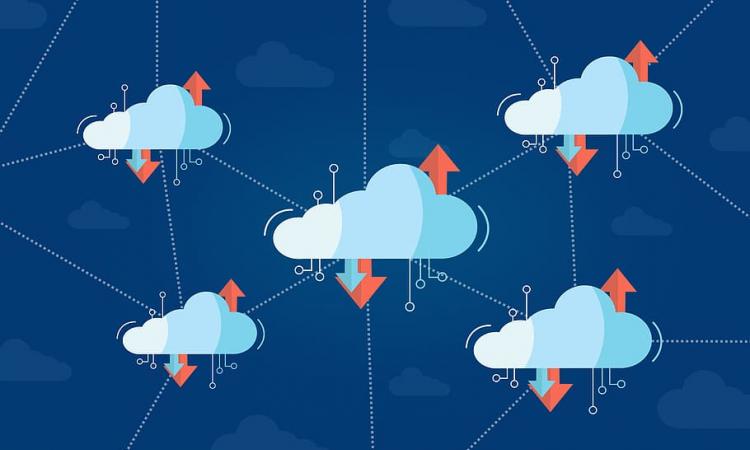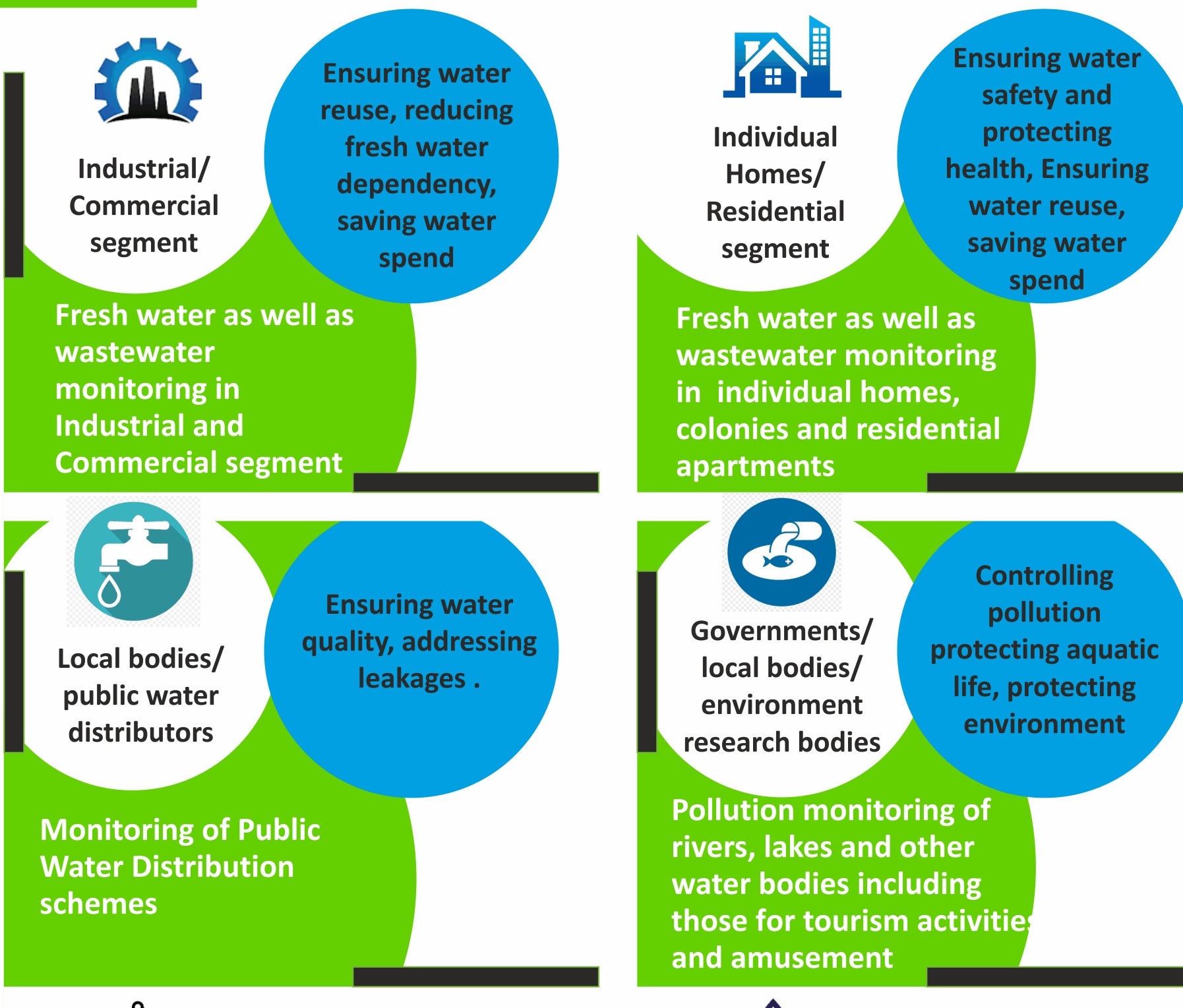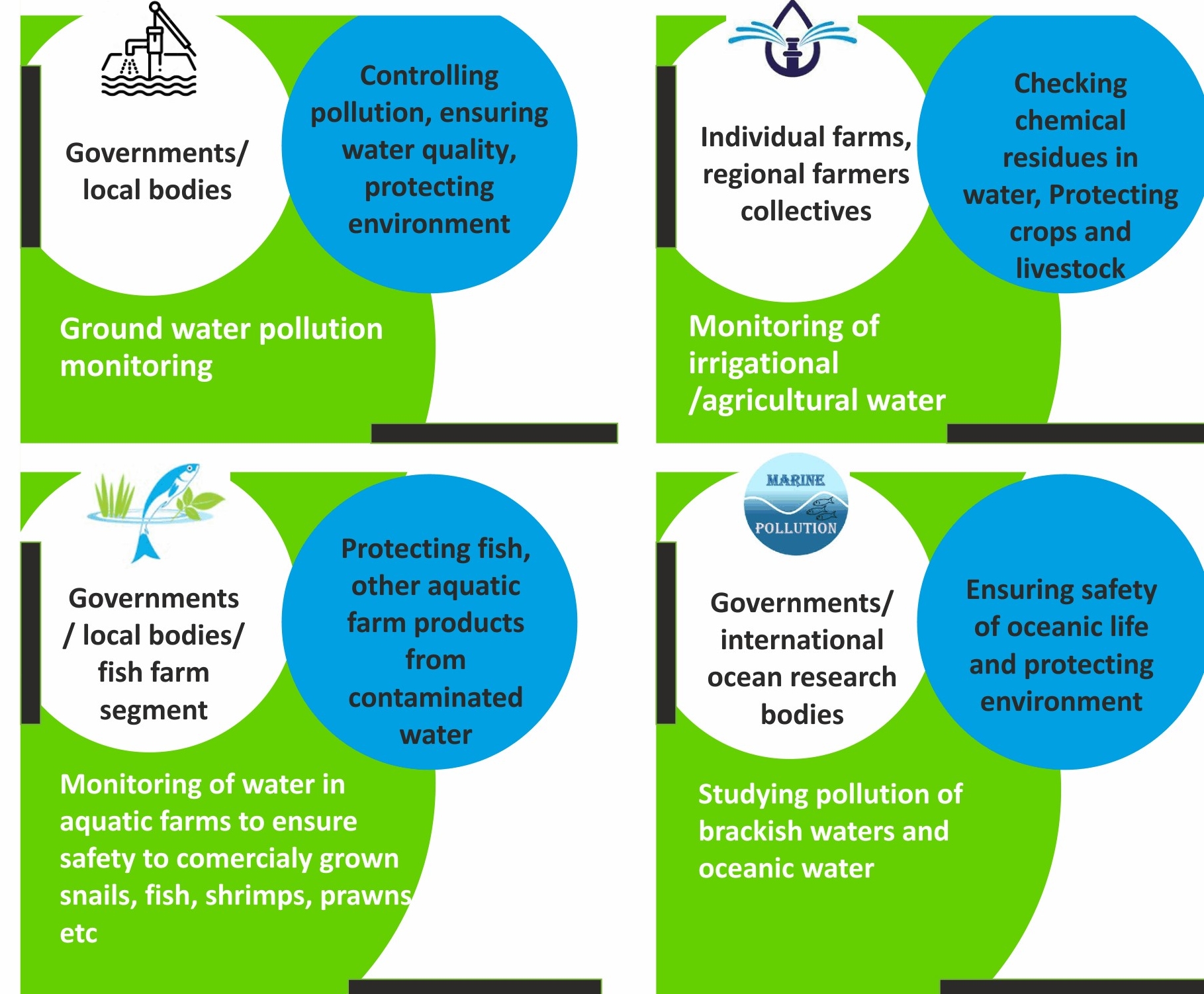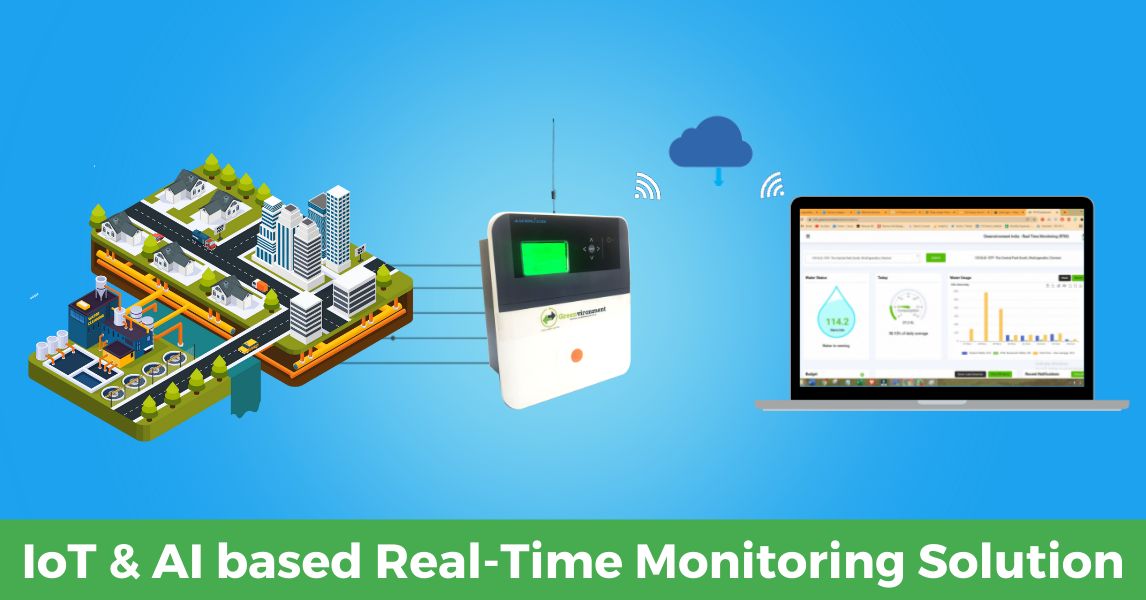
As per NITI Aayog, India is reeling under a severe water crisis with around 50% population experiencing high-to-extreme water shortages. At the same time, it is estimated that currently up to 25% of water is lost in transit due to leakage caused by poor maintenance of infrastructure. Also, 70% of our freshwater sources are contaminated and our major rivers are dying because of pollution. India has 18% of the world’s population but has only 4% of the global water resources.
In such a scenario, ensuring optimum use and reuse of water extracted from natural water sources is imperative. New technologies such as IoT-cloud based monitoring of water utilities and water resources offer a viable solution to ensure water use optimization and address water pollution.
By helping to reduce water footprint, IoT-cloud based water monitoring systems exemplify the commitment to Environment Social Compliances (ESG) as well as to Sustainable Development Goals (SDGs) of businesses and governments, alike.
IoT-cloud based water monitoring
The word ‘cloud’ stands for rejoicing in the Indian context, especially in villages where rainfed farming is the major, perhaps the lone source of livelihood. But, at times, in the digital era, the word ‘cloud’ has a similar, rather more elaborate connotation linked to water.
As the name specifies, Internet-of-Things (IoT) is a network of interconnected devices such as smartphones, laptops, computers, sensors and actuators that can communicate with each other to perform a wide range of actions.
In the water sector, IoT is used in a number of scenarios to collect and analyse real-time data related to water such as flow, leakage, quality, consumption and energy use.
The performance of water treatment plants, public water distribution systems (WTPs), sewage treatment plants (STPs), effluent treatment plants (ETPs) and other water utilities can be analysed with the help of IoT-cloud based systems. Thus the system helps ensure better efficiency, improved operations and higher revenue at each point of water consumption.
IoT-Cloud based monitoring of water: Fits into varied consumption scenarios
The IoT Internet of Things (IoTs) and cloud-based systems for monitoring water can be installed and used across various sectors such as manufacturing industries, agriculture, commercial, hospitality, healthcare and residential sector as well as water and wastewater management projects of the government.
The purposes for which IoT based water monitoring could be used are as follows:
- Ensure quality of drinking water
- Checking water pollution
- Leakage detection of water infrastructure including pipelines and water tanks
- Monitoring performance of WTPs, STPs and ETPs

- Monitoring recycled water quality to enhance reuse
- Monitoring of energy consumption of WTPs, STPs, ETPs and other water utilities
- Monitoring of aquaculture water quality
- Detecting the quality and level of water in freshwater sources such as ponds, lakes, rivers and water reservoirs

ESG, SDGs and IoT-cloud-based water monitoring
Helps to achieve the goal of water neutrality
IoT-cloud-based water monitoring system was evolved as a response to the demand for a smarter measurable option for internalizing water use optimization. It is proved as an effective tool to report the performance of businesses in addressing water risks related to climate change and update the achievements in managing water.
This is significant as proactive measures and quantifiable accomplishments in addressing water risks related to climate change is an important requirement in the Environmental Social Governance (ESG) reporting of businesses.
Treatment of sewage, effluents and wastewater generated at various points of consumption such as residential, industrial, commercial, hospitality and health care sectors under a well-monitored environment with the help of IoT has multifarious benefits. At the outset, it helps to halt the disposal of highly polluted water to natural water bodies.
But it has opened a plethora of opportunities to consider wastewater as a resource, which can be tamed and consumed again. Reuse of water recycled in an environment where quality is monitored in real-time helps to reroute the recycled water for a host of non-potable purposes such as gardening, pavement cleaning cooling towers, toilet flushing etc.
Water loss management
Water loss management is becoming increasingly important due to population growth and water scarcity. Currently, up to 25% of water is lost in transit due to leakage caused by poor maintenance of infrastructure. However now sensors to provide real-time insight into pressure, flow and quality are widely used to control wastage of water during distribution.
These measures enabled by IoT-cloud based real-time monitoring of water helps to reduce the withdrawal of fresh water and saves the earth’s natural water resources.
Help adhere to pollution control norms
IoT-cloud based monitoring of wastewater comes necessary for industrial, commercial, hospitality, healthcare and residential sectors in order to adhere to the pollution control norms set by the government. In India, installing an Online Continuous Emission Monitoring System (OCEMS) for Sewage Treatment Plants (STPs) and Effluent Treatment Plants (ETPs) would soon become compulsory for sharing the quality of the effluent on a real-time basis with the pollution control authorities.
Central Pollution Control Board (CPCB) has already written to all Pollution Control Boards in states and Pollution Control Committees in Union Territories asking for time-bound implementation of OCEMS. The installation of OCEMS at the outlet of STPs for the measurement of water quality parameters would ensure that our freshwater sources (lakes, rivers, sea, ocean, aquifers, groundwater etc.) are not contaminated due to effluent disposal.
IOT-cloud v/s traditional water monitoring
In fact, the IoT-Cloud based smart solution to water monitoring is cheap and reliable in ensuring water monitoring and water use optimization. The system uses the existing communication infrastructure for smart applications. Further continuous and real-time monitoring of water quality is possible in the system, which requires very minimal human interventions.
It replaces all the major steps in the traditional way of water and wastewater monitoring like sample collection, preservation, transportation, sample pre-treatment, calibration, reagent addition and sample analysis with automated procedures and online analysers.

What is monitored?
IoT uses devices like sensors and probes important parameters and real-time measurement is done based on data fed to the cloud. By using this platform, a person or a company can take useful actions to ensure water quality and optimize water use or reuse.
The important parameters monitored under the system are pH, Total Dissolved Solids (TDS), Chlorine, Biochemical Oxygen Demand (BOD), Chemical Oxygen Demand (COD), Total Suspended Solids (TSS), Turbidity, Oxidation & Reduction Potential (ORP), Pressure and Temperature.
Government recognizes the potential of IoT-Cloud based water monitoring
The government of India had amply recognized the scope of IoT and cloud-based systems in monitoring water, by organizing the ICT Grand Challenge-Water 2020 under the aegis of the National Jal Jeevan Mission and the Ministry of Electronics & Information Technology (MeitY) Government of India. ICT Grand Challenge-Water was aimed at creating innovative, modular and cost-effective solutions for developing a ‘Smart Water Supply Measurement and Monitoring System’ to be deployed at the village level. Two hundred enterprises, which offer water monitoring solutions have taken part in the challenge.
Case study: IoT-Cloud based RTM 2.0 by Greenvironmentindia
The experience of Greenvironmentindia, the runner up in the ICT Grand Challenge-Water 2020, testifies to the scope of IoT based water monitoring in India. RTM 2.0, Greenvironmentindia's Real-Time Monitoring (RTM) system, which is IoT based has been deployed in 25 locations where water distribution schemes under JJM is getting implemented.
Greenvironmentindia has the privilege of close and long-standing engagement with most of its clientele in the company’s nine years of operations. A real-time monitoring system based on IoT has been proved to be highly effective in addressing three challenging tasks - fulfilling water needs, saving water cost, energy cost and reducing water footprint.
The company has been successful in ensuring the effective recycling of 70 billion litres of wastewater in the last three years through IoT-cloud based RTM. The clients, from the sectors such as industries, hospitality, health care, commercial complexes and residential sector testify to RTMs’ effectiveness in addressing the water challenge at times.
In a competitive business scenario, even the noble idea of reducing water footprint would go long only when it adds value and helps to address costs. RTM’s stress to contribute to the demands of operational efficiency, cost reduction, maintaining environment/pollution compliances and energy saving makes it inevitable for its clientele.

Greenvironmentindia’s RTM 2.0 for water and wastewater works with the help of sensors fitted in water utilities, IoT and cloud-based data management to check and analyze critical quality measuring parameters (e.g., physical, chemical, and microbial) of target water. It can be freshwater, wastewater, recycled water, water bodies etc.
Based on the analytics, automated alerts about the quality of water or recycled water and the pointers to the impending issues of water management or recycling systems, are shared with the users enabling them for the right decision making.
In the case of freshwater, remedial measures include chlorine dosing and streamlining purification measures such as UV filtration and Reverse Osmosis can be taken based on the alerts generated with the help of data fed on water quality.
In the case of wastewater treatment plants including STPs and ETPs, based on the data on water quality, alerts are generated, which pinpoint to the efficacy of plant functioning that would help in timely repairs and maintenance.
Greenvironmentindia’s IoT based Real Time Monitoring for Wastewater is patented.